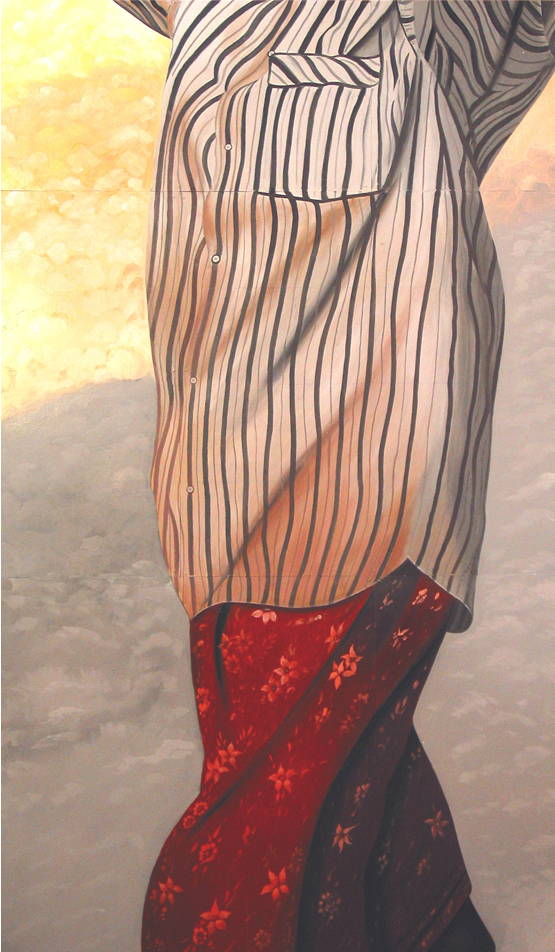
Vasco de Gama
South India
The voyage stacks space upon space, concrete space upon the space of knowledge, the space of practical communication upon the former two. It therefore stacks map upon map, world-map upon world-map, the uniform space of plains and seas, the space of techniques, the space of knowledges.
– Michel Serres, “Jules Verne’s Strange Journeys” 1975
In 1498, Vasco da Gama arrived in Malabar seeking a direct line from Europe to India’s black pepper – a route Columbus had unsuccessfully sought six years before. Da Gama’s arrival in what is now called Kerala changed the face of international trade; scholars date the inception of global commerce to his incursion into India. With the possibility of conjoining two longtime obsessions – the history of global trade and billboards – Fels traveled to South India in 2003, as artist in residence at the Chitraniketan Art Center in Trivandrum.
South Indian billboard painters come from a long tradition of signpainters. At the time of Fels’ arrival, signpainting was coming under siege from digital media. Painters were being usurped by inkjet printers, making his project ever more germane. He had planned to collaborate with billboard painters to depict and interpret Vasco’s presence in Kerala – those displaced by global technology would create images contemplating globalization’s reach. Fels and the billboard painters would also be forced to negotiate a kind of trade in visual concepts; by mirroring elements of the relationship between that emissary of the West Vasco da Gama and the Indians he encountered, the process of painting would invariably become an ongoing dialogue on history, a performance and exchange between East and West enacted into the present.
In the month at Chitraniketan, Fels worked on two complementary bodies of work. A series of 4x6’ graphic canvas ‘signs’ considered various elements in the Vasco legacy. These he completed with Opole, a sign-painting collective in a nearby village. He also collaborated with Syam Kumar, an experienced billboard painter, on a larger ‘hoarding’: an 8x16’ enamel on aluminum billboard treating Vasco’s arrival as if it were an event in a Bollywood film.
When Fels returned to Seattle with the canvas signs and the aluminum billboard, he was invited by the South Asian Center at the University of Washington to exhibit the work at a new gallery in the university’s central library, a colloquium was organized on the exhibition. On exhibit for three months, the Chitraniketan images were seen by Samuel Parker, a professor of anthropology with a background in the history of Indian art. Parker instigated the purchase of the entire exhibition by the Washington State Arts Commission. It is now permanently installed at the home of the honors program at the University of Washington Tacoma, shown along with explanatory material researched and written by students.
In 2004-5, Fels returned to Kerala as a Fulbright Senior Research Scholar; he assembled a collective of group in Cochin and spent eight months working with them in a warehouse, in the center of the centuries old spice trading area, to produce a series of billboards. The work opened as traveling exhibition, organized by the Tacoma Art Museum in 2008, and it is still touring.


